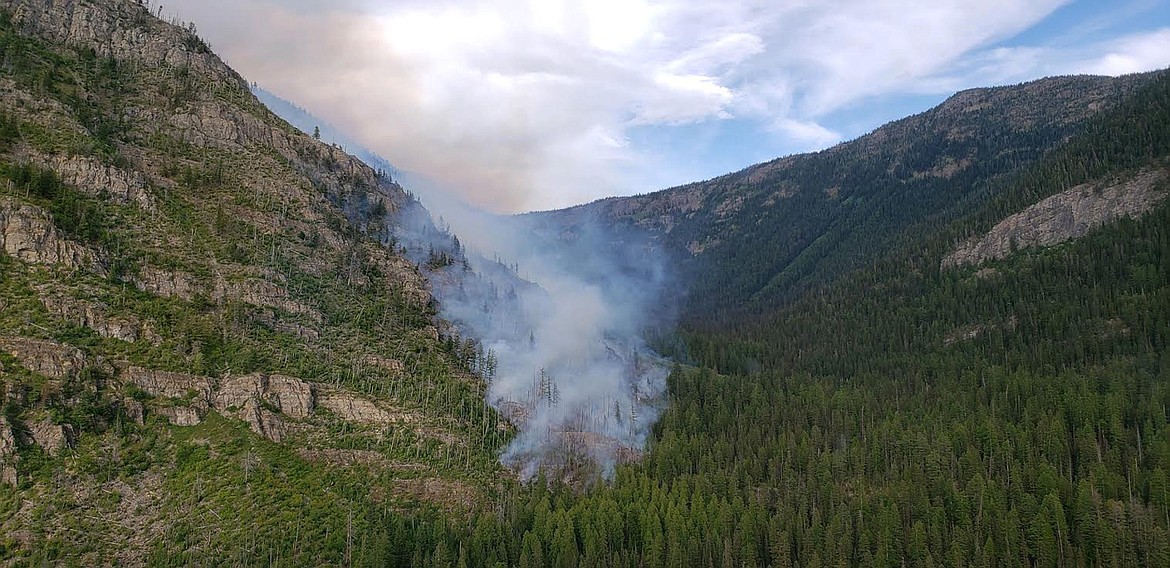Forest Service poised to approve massive Swan Valley project
The U.S. Forest Service is poised to greenlight part of a massive forestry project that aims to improve wildlife habitat while reducing fuels that increase the threat of wildfire to communities in the Swan Valley.
The Mid-Swan Landscape Restoration and Wildland Urban Interface Project would cover more than 174,000 acres of the Flathead National Forest around Condon and Swan Lake and could take place over 15 years. It would involve commercial and noncommercial tree cutting, replanting and reseeding of endangered whitebark pine, prescribed burns and other treatments aimed at returning the forest to a more natural state after decades of logging have fragmented the landscape into a giant checkerboard.
A few components of the plan have been pared down since it was first proposed in 2018 after residents raised concerns about the extent of logging, vegetation thinning and construction of forest roads.
"Some would advocate for less action on this landscape given the uncertainties of future effects of climate change; however, I believe less active management to be irresponsible given the existing and expected future conditions for this landscape," Flathead National Forest Supervisor Kurt Steele said in a "draft record of decision" published Friday. "Every year we see increased fire activity nationwide, and numerous scientific sources recommend taking an active role in guiding landscape change and [improving] the resilience of forests to disturbance from fire, drought, insects and disease."
The Forest Service said a team of scientists has spent the past four years studying nearly 250,000 acres of the Swan Valley, including the project area, examining how the forest has changed following nearly a century of fire suppression and timber harvests. Their assessment uses data collected from the field and historical photos to document the forest conditions of 60 to 90 years ago, and it projects what the forest could look like a few decades into the future.
"Species such as Canada lynx, bull trout and whitebark pine face unprecedented risk from climate change, exotic pathogens and all the associated ecological impacts, and failure to act will most likely result in their continued decline," Steele wrote. "A warming and drier climate, combined with the legacy effects of fire suppression, requires active vegetation management, and the scientific knowledge applied to this decision has been shown to be an effective prescription to mitigate these risks."
THE PROJECT area is home to grizzly bears, bull trout and Canada lynx, all of which are listed as threatened under the federal Endangered Species Act.
"What we're trying to do is get something more in alignment with what all of these native species actually need," said Craig Thompson, a wildlife ecologist with the Forest Service. "We're trying to target a more natural mosaic of habitat out there."
The full scope of the project could involve nearly 38,000 acres of commercial timber harvests, more than 60,000 acres of noncommercial tree thinning and other fuel-reduction activities, and the removal of 285 culverts that inhibit fish.
But for now, the Forest Service only plans to approve about half of the envisioned 15-year project. Officials on Friday published a final environmental impact statement as well as a "draft record of decision," which is subject to final approval sometime this winter.
"The final environmental impact statement really took a deep dive into the comments we received on the draft environmental impact statement," said Forest Service project leader Joe Krueger. "We spent the last year refining everything based on the issues and concerns that the public identified."
The tentatively approved portion of the plan involves nearly 17,900 acres of commercial timber harvests, estimated to produce between 85 million and 102 million board feet of timber, as well as more than 35,300 acres of noncommercial tree thinning and other fuel-reduction activities.
Forest Service spokeswoman Tami MacKenzie said the agency will reevaluate its plans six or seven years into the project before deciding whether to approve the remaining work described in the environmental assessment. Krueger said the main driver behind that decision will be conditions on the ground — especially changes in fire behavior in the area.
AMONG THE critics of the project is Keith Hammer, president of the Swan View Coalition, who maintains the plan is too large and lacking in details about the timelines for proposed logging and prescribed burning operations.
"We're talking about the Swan Valley. It's been butchered, between the Forest Service, Plum Creek [Timber Co.] and some private lands. It is riddled with roads and clearcuts," Hammer said.
Hammer said ideal habitat for Canada lynx includes large, mature trees for denning and smaller trees for hunting.
"But the Forest Service's answer is to go out and cut down the big trees so that there's more little trees next to what big trees they do leave," he said. "Firstly, they create a problem and say there's a problem, and then the answer is always a chain saw or a feller buncher."
Hammer said the Swan View Coalition plans to file an objection to the project before it receives final approval. Krueger said he anticipates such objections and would consider them in detail, but he added that leaving the forest alone is not a viable option.
"People are concerned about active management," Krueger said. "But to me, no action is not appropriate."
The plan and supporting documents can be found at bit.ly/midswan. Krueger can be reached at 406-529-8727 or joseph.krueger@usda.gov.
Assistant editor Chad Sokol may be reached at 406-758-4439 or csokol@dailyinterlake.com.


